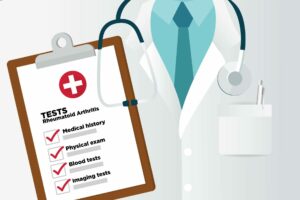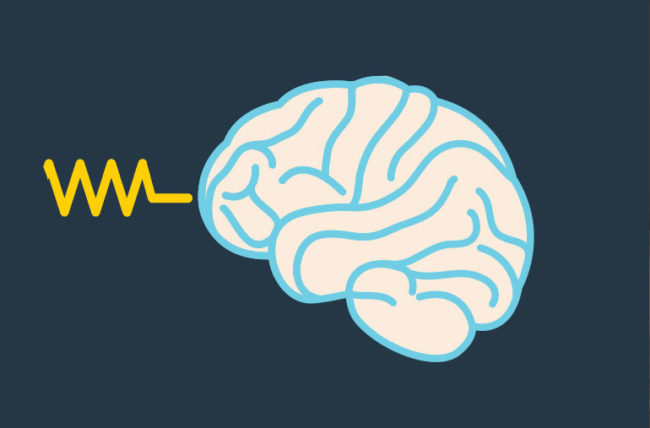Do you have trouble focusing on tasks? Do you feel like you’re constantly in a hurry? Are you easily distracted? If so, there’s a good chance that you may have ADHD. Attention Deficit Hyperactivity Disorder is one of the most common mental disorders in the United States, and it can affect people of all ages. In this blog post, we will discuss the symptoms, causes, and treatment of ADHD. We will also provide a comprehensive checklist to help you determine if you or someone you know may be suffering from ADHD.
Contents
What Is ADHD Checklist?

ADHD checklist is a list of symptoms used to diagnose attention-deficit/hyperactivity disorder (ADHD). It is a mental disorder that is characterized by problems with focus, hyperactivity, and impulsiveness.
There are three types of ADHD: inattentive type, hyperactive-impulsive type, and combined type. Symptoms must be present for at least six months to be diagnosed with ADHD.
The exact cause of ADHD is unknown, but it is thought to be caused by a combination of genetic and environmental factors. Treatment for ADHD typically includes medication, counseling, and behavioral therapy.
How Does an ADHD Checklist Work?

The working of an ADHD checklist is pretty simple. It’s a list of symptoms that are often associated with ADHD. If you have a certain number of symptoms, you may have the condition.
Most ADHD checklists have between 20 and 30 symptoms. These symptoms are divided into two categories: inattention and hyperactivity/impulsivity. To be diagnosed with ADHD, you must have a certain number of symptoms from each category.
The number of symptoms required for a diagnosis varies depending on the checklist used. For example, the DSM-5 (the diagnostic manual used by mental health professionals) requires at least six symptoms from each category for an adult diagnosis. A child diagnosis requires at least five symptoms from each category.
The diagnosis of ADHD can be tricky. It’s often hard to differentiate between symptoms that are caused by ADHD and symptoms that are caused by other conditions. This is why it’s important to work with a mental health professional who is experienced in diagnosing the condition.
What Are Different ADHD Checklist Symptoms?

There are different types of ADHD, which can present themselves in a variety of ways. It’s important to be aware of the different symptoms so that you can get an accurate diagnosis and treatment plan.
Some common ADHD checklist symptoms include:
Difficulty paying attention to details or making careless mistakes
One of the main symptoms of ADHD is difficulty paying attention. This can manifest itself in several ways. Sometimes there are problems with focusing on a specific task or activity. Other times, people with ADHD may be easily distracted. They may also have trouble following instructions or keeping track of details.
Hyperactivity and impulsiveness
Another symptom of ADHD is hyperactivity. This can manifest itself as fidgeting, squirming, or excessive talking. People with ADHD may also have difficulty staying still for long periods. They may also be impulsive, which can lead to problems with decision-making. Hyperactivity and impulsiveness can also make it difficult for people with ADHD to sit still or wait their turn.
Constant daydreaming
People with ADHD may also have difficulty controlling their thoughts. They may daydream or space out frequently. This can make it difficult to focus on tasks or conversations. These daydreams may be pleasant or they may be anxious or worrisome.
Feeling restless or constantly on the go
People with ADHD may feel like they are always on the go. They may have difficulty sitting still or relaxing. This can make it hard to focus on tasks or unwind at the end of the day.
Problems with organization
ADHD can also make it difficult to keep track of details and be organized. This can lead to problems at work, school, or home. People with ADHD may lose things frequently or have trouble completing tasks.
Trouble with executive function skills
ADHD can also impact a person’s executive function skills. These are the skills that help us plan, organize, and complete tasks. People with ADHD may have difficulty starting or finishing projects. They may also have trouble prioritizing tasks or keeping track of time.
Emotional difficulties
ADHD can also cause emotional difficulties. People with ADHD may have trouble regulating their emotions. They may be more prone to mood swings and outbursts. They may also experience anxiety, depression, or other mental health issues.
How Is ADHD Checklist Diagnosed?
If you think you or your child may have ADHD, it’s important to see a doctor for an evaluation. A comprehensive assessment will help rule out other conditions and get an accurate diagnosis.
The first step in diagnosing ADHD is to complete a thorough medical exam. This will help rule out other conditions that could be causing symptoms. The doctor will also ask about your medical history and your family history of ADHD or other mental health conditions.
After the medical exam, you will likely be referred to a psychologist or psychiatrist for an evaluation. This evaluation will include a clinical interview and questionnaires about your symptoms. You may also be asked to complete some cognitive and academic testing.
Your doctor may also recommend that you keep a symptom diary. This can help track your symptoms and how they affect your daily life. Once all of this information has been gathered, the doctor will make a diagnosis.
Treatment Options for ADHD In ADHD Checklist

There are many different treatment options available for ADHD. The best course of treatment will depend on the severity of the symptoms and the individual’s needs.
Medication is often used to treat ADHD. Stimulants are the most common type of medication used to treat ADHD. These medications can help improve focus and concentration. They can also reduce impulsive behaviors and hyperactivity.
Non-stimulant medications may also be used to treat ADHD. These medications can take longer to work than stimulants, but they may have fewer side effects.
Psychotherapy is another treatment option for ADHD. This type of therapy can help people with ADHD learn how to manage their symptoms. It can also help with emotional difficulties and behavioral problems.
Behavioral therapy is another option that can be used to treat ADHD. This type of therapy can help people with ADHD learn how to better control their behavior. It can also teach them coping skills and problem-solving strategies.
Many lifestyle changes can help people with ADHD manage their symptoms. These include getting regular exercise, eating a healthy diet, and getting enough sleep. People with ADHD may also benefit from using time management tools and organizational strategies.
Why Do People Use ADHD Checklist?
People use ADHD checklists for a variety of reasons. Some use it as a way to keep track of their symptoms, so they can better communicate with their doctor. Others use it to get a general idea of whether or not they may have ADHD. And still, others use it as part of their diagnosis process.
The main reason people use an ADHD checklist is that it provides a quick and easy way to screen for the condition. It can be used by parents, teachers, or even employers to identify possible signs of ADHD in someone. And while it’s not a diagnostic tool, it can be a helpful first step in getting the help you need.
Sometimes, people use an ADHD checklist as a way to track their symptoms. This can be helpful if you’re not sure whether or not you have ADHD, but you want to keep track of how you’re feeling. It can also help communicate with your doctor. If you have a list of symptoms, it can be easier to discuss them and get the help you need.
ADHD checklists are also sometimes used as part of the diagnosis process. While they’re not always reliable, they can be helpful tools for doctors. If you have a positive result on an ADHD checklist, your doctor may want to do further testing to confirm the diagnosis.
Conclusion
ADHD is a complex neurodevelopmental disorder that can affect a person’s ability to focus, control impulsivity, and manage emotions. While there is no one-size-fits-all solution for managing ADHD, a combination of medication, therapy, lifestyle changes, and support from loved ones can make a big difference.
If you think you or someone you love may have ADHD, it’s important to talk to a doctor or mental health professional. They can help you figure out if it’s ADHD or something else entirely. From there, they can develop a treatment plan that will address your specific needs.
Hope this article was of help to you! If you are suffering from mental health disorders, you may seek help from Therapy Mantra. We have a team of highly trained and experienced therapists who can provide you with the tools and skills necessary for overcoming mental health disorders. Contact us today to schedule an online therapy or download our free Android or iOS app for more information.


